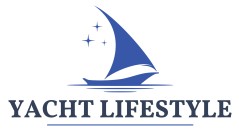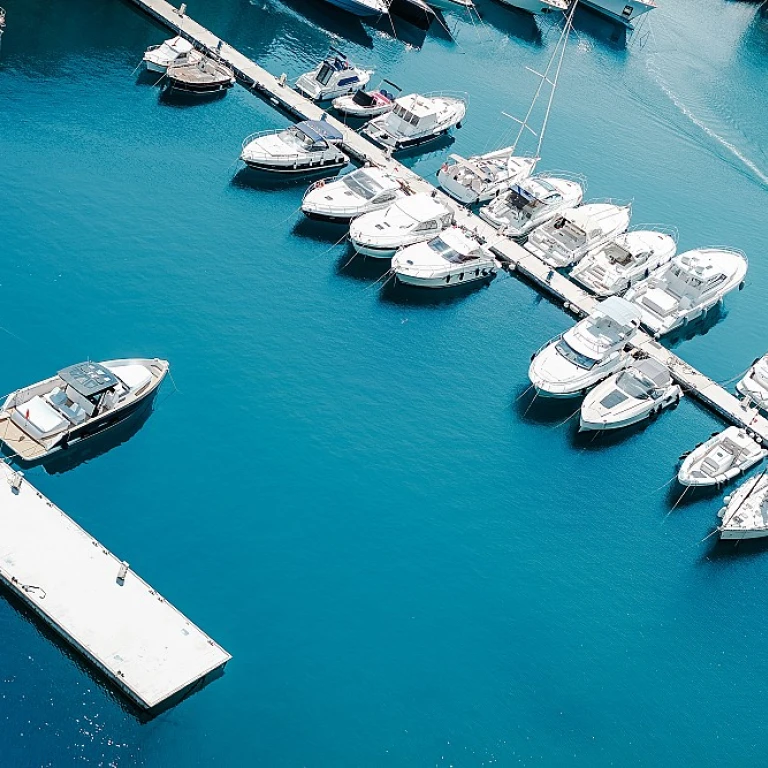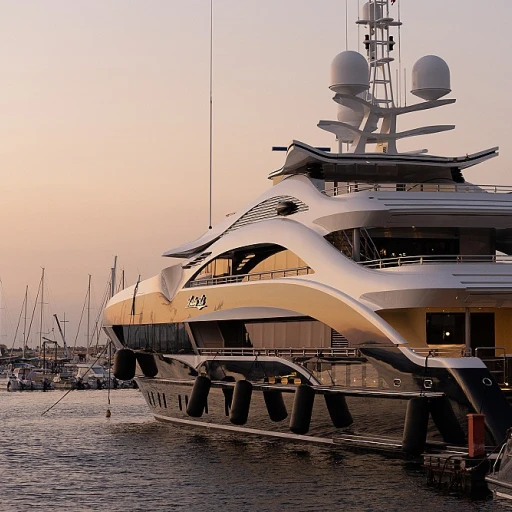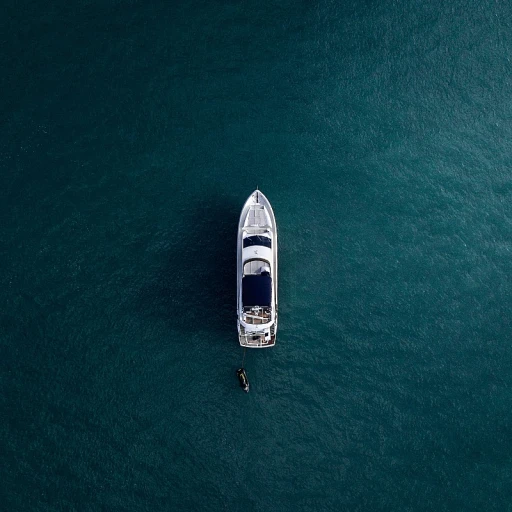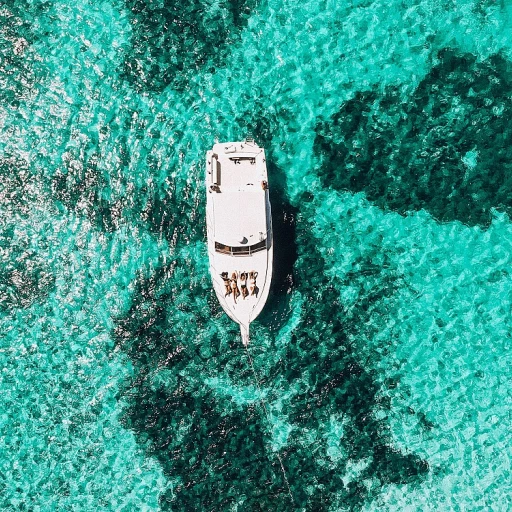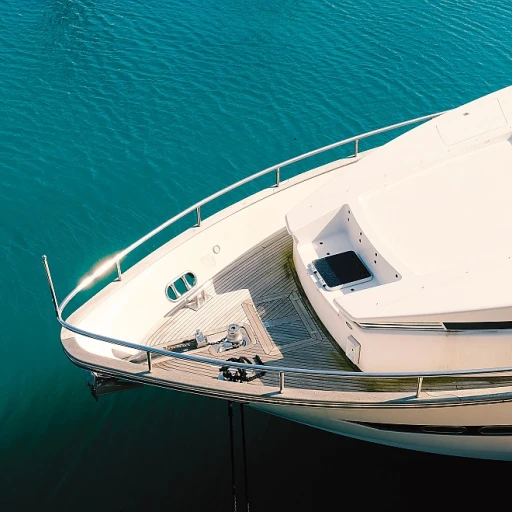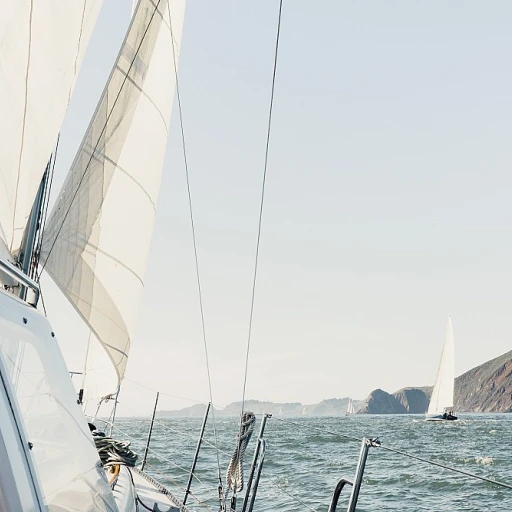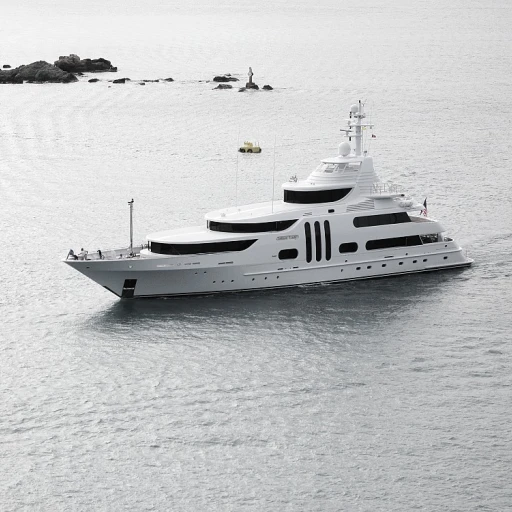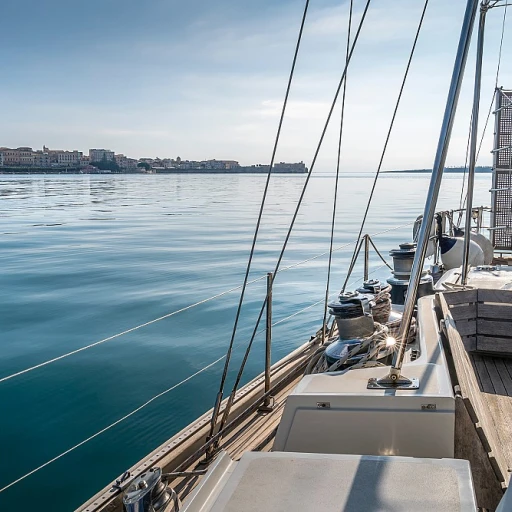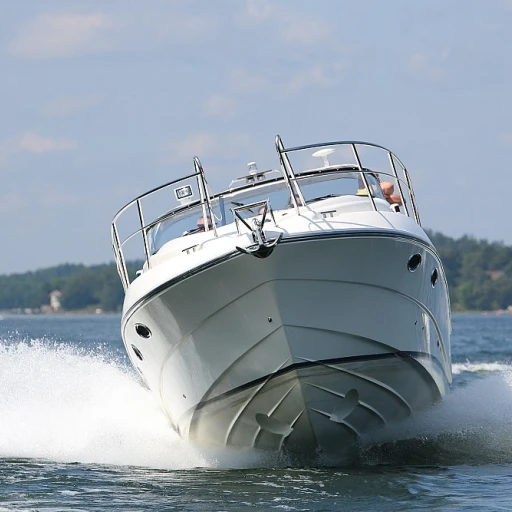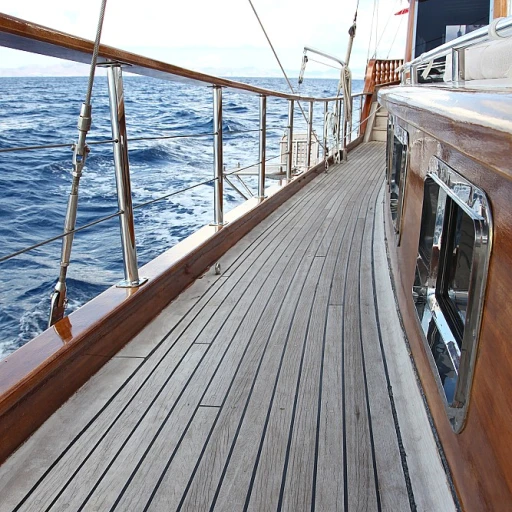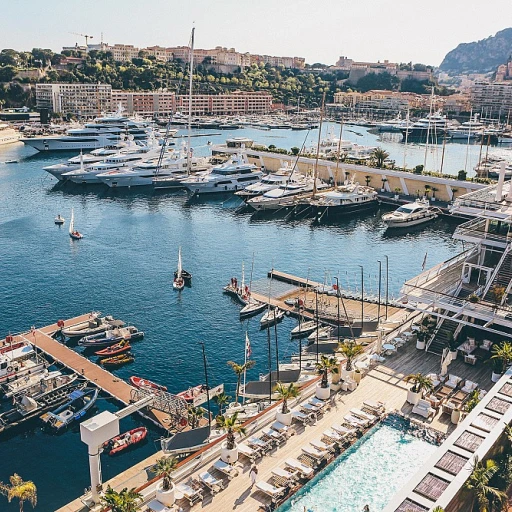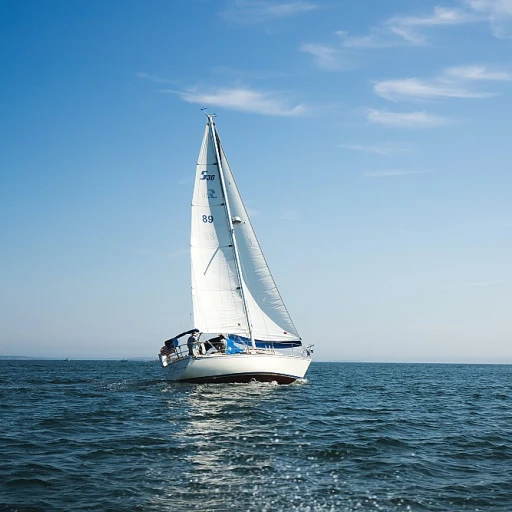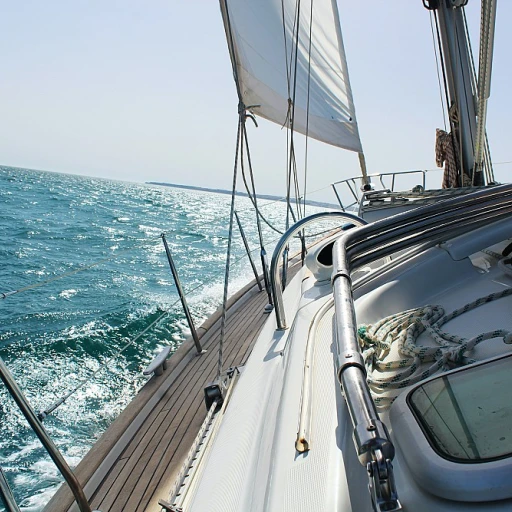
The Importance of Lifeboats in Yachting
The Role of Lifeboats in Marine Safety
When navigating the expansive waters, the significance of lifeboats on a yacht cannot be overstated. Lifeboats are more than just a precautionary measure; they are crucial components of a yacht's safety kit, ensuring the protection of both the vessel and its crew. In scenarios where adverse weather conditions or unexpected emergencies arise, having a reliable lifeboat onboard is essential for executing an effective and timely evacuation.
Yacht owners must always prioritize marine safety, and the selection of the right equipment can be an intricate process. Key elements such as the correct type of lifeboat, suitable engine power, and considerations for the specific length location of the yacht are vital. Additionally, understanding the role of specific features like marine hydraulic valves, enclosed lifeboats, and the functionality of a marine deck can further add to the safety measures.
The current market offers a diverse range of lifeboats, from totally enclosed types to those optimized for quicker deployment. Boat sales frequently highlight the latest advancements in rescue boat designs and technology, with a keen focus on equipment that ensures rapid response in critical situations. By exploring details view options and evaluating the status view of available models, yacht enthusiasts can make informed decisions about the lifeboats that best suit their needs.
Equipped with cutting-edge marine technology, modern lifeboats are designed to withstand harsh marine environments. Each component, from the water pump marine system to the rope marine connectors, is meticulously engineered to ensure optimal performance during rescue operations. For those in the market, understanding trade alerts and evaluating the rescue solutions available can provide crucial insights into this vital yacht asset.
Current Market Trends for Lifeboats
Analyzing the Current Dynamics of the Lifeboat Market
In the ever-evolving yacht industry, observing market trends becomes an essential activity for boat enthusiasts, ensuring they stay ahead in securing invaluable rescue equipment. Notable shifts and evolutions are evident across the lifeboat sector, particularly as technological advancements and heightened safety regulations shape manufacturers' offerings. Delving into this dynamic market reveals fascinating insights pivotal for yacht owners. A significant trend gaining momentum is the rising demand for enclosed lifeboats. These boats provide enhanced protection against harsh weather conditions, offering an extra layer of safety and comfort. Furthermore, the integration of advanced hydraulic systems and valve marine technologies in lifeboats improves the ease of deployment, boosting operational efficiency during emergencies. Sales of new and used lifeboats have also seen fluctuations, influenced by the ebb and flow of yacht sales. As more luxury yachts populate the market, there's been a surge in demand for high-quality lifeboats equipped with state-of-the-art features like marine hydraulic pumps. This ensures quick and streamlined assistance in times of need. Additionally, awareness campaigns about marine safety, backed by regulatory bodies, have played a significant role in shaping consumer preferences. Yacht owners are becoming increasingly meticulous about the specifications and certifications of the lifeboats they purchase, driving up the interest in updated models available in both new and used boat sales. Recent trade alerts highlight innovations like the totally enclosed lifeboat and fall lifeboat, promising reduced risks with free fall mechanisms and secure anchor systems. The incorporation of marine equipment, designed to withstand challenging maritime environments, represents a notable progression towards enhancing safety and reliability. For yacht enthusiasts eager to master securing their sailboats, understanding these market trends and technological advancements ensures that they make informed decisions, aligning their investments with the newest standards of safety and efficiency. By doing so, they not only uphold the integrity of their vessels but also prioritize the well-being of all passengers on board.Key Considerations When Purchasing a Lifeboat
Critical Factors for Lifeboat Acquisition
When exploring the range of lifeboats available for purchase, several key aspects require careful consideration to ensure that you select the most appropriate equipment for your needs.- Type and Design: Understanding the different configurations such as an enclosed lifeboat or a free fall lifeboat is crucial. Completely enclosed lifeboats provide enhanced protection against harsh marine elements, offering a robust option for unpredictable sea conditions.
- Capacity and Size: Evaluate the length location and the number of individuals the lifeboat can accommodate, matching these to your yacht's requirements. Larger yachts might necessitate multiple lifeboats to ensure all passengers and crew have sufficient space.
- Power Source: The choice of propulsion, whether engine driven or manual, impacts both the performance and maintenance requirements of the lifeboat. Often, an engine option can improve your rescue response time.
- Compliance and Certification: All lifeboats must adhere to international marine safety standards, ensuring they are equipped to handle emergency situations effectively. Consider the marine safety certifications required for your vessel's operating region.
- Additional Features and Equipment: It may be beneficial to explore lifeboats offered with integrated marine hydraulic pump systems for enhanced maneuverability. Integrating utility features such as rescue boat equipment and marine deck essentials can be pivotal for a successful rescue operation.
Top Manufacturers and Brands in the Lifeboat Industry
Leading Players in the Lifeboat Market
When sailing or yachting, ensuring safety is paramount, and lifeboats are a crucial part of marine safety equipment. Several renowned manufacturers cater to the lifeboat industry, providing quality rescue boats and ensuring adherence to international safety standards. Here, we explore some of the top players in the field, showcasing their commitment to quality and innovation.- Norsafe: Known for their robust marine safety solutions, Norsafe specializes in enclosed lifeboats and rescue boats. With a strong global presence, they deliver cutting-edge technology and consistent quality.
- Viking Life-Saving Equipment: This brand offers a comprehensive range of marine safety products, including totally enclosed lifeboats. Their solutions are designed to perform in all marine environments, ensuring critical reliability.
- Palmer Johnson: While primarily known for luxury yachts, Palmer Johnson also provides durable life-saving equipment, combining design aesthetics with safety functionalities.
- Survitec Group: With an extensive range of products, Survitec stands out in the marine safety space. Their lifeboats are crafted with the latest technology, focusing on hydraulic functionality and reliability during rescue operations.
Cost Factors and Budgeting for Lifeboats
Budgeting and Cost Considerations for Lifeboats
Purchasing a lifeboat involves various factors that significantly influence the cost. As you navigate through the purchasing process, several elements demand attention to ensure both safety and financial feasibility. Opting for a totally enclosed lifeboat can drive costs higher due to their enhanced security features. These boats are vital for robust marine safety and endure harsh seafaring weather, providing assurance for yacht owners. Marine equipment integration such as hydraulic systems, pumps, and engines also affects the price. Using high-quality marine pumps and engines ensures optimal performance, yet this quality comes with a price. Consider whether the higher initial investment aligns with your longevity and performance requirements. When budgeting, acknowledge that prices can differ based on the ship's length, location, and equipment status. For instance, the price of lifeboats near popular marine sales hubs may vary significantly compared to less commercial trading spots due to different taxes and import duties. Focusing on products with established reliability and performance is wise. With manufacturers providing different valve marine solutions, enclosed lifeboat designs, and water rescue integrations, it's crucial to view details of each offering meticulously. This prevents overspending on unnecessary features while ensuring compliance with marine safety standards. Finally, don't overlook additional costs post-purchase. Marine deck installation, anchor securing, rope marine setup, and regular maintenance involve both time and financial resources. An understanding of these continuous obligations is essential for maintaining effective lifeboat readiness and performance. For those actively participating in the market, frequently checking trade alerts and staying informed about boat sales trends can aid in making cost-effective decisions.Maintenance and Upkeep of Lifeboats
Efficient Lifeboat Maintenance Practices
In the yacht industry, ensuring the continual readiness and reliability of lifeboats is crucial for safety. Regular maintenance and upkeep of this essential marine safety equipment involve a series of detailed and routine checks.- Marine Inspection: Lifeboats, whether enclosed or open, require periodic inspection to identify any wear and tear or potential operational issues. Key areas include the boat's hull, engine, rescue equipment, and marine deck components like the anchor and ropes.
- Mechanical and Hydraulic Systems: Checking the marine hydraulic systems is vital to maintain the lifeboat's performance. This includes inspecting the engine, valve marine, and the pump marine systems that act as the lifeblood of these rescue vessels.
- Utility Equipment: Regular checks of utility equipment such as the totally enclosed lifeboat's closed compartments and marine safety tools ensure they are functioning correctly. Rescue boat equipment like the fall lifeboat mechanisms should undergo frequent tests to guarantee quick and fail-safe operation during emergencies.
- Updating Safety Gear: Lifeboat safety equipment, including enclosed spaces, flotation devices, and life-saving gear, requires routine updates. Check the status view of all equipment before setting out to sea.
- Preventing Water Intrusion: Regular inspection and cleaning can prevent water and debris from compromising the functionality of the lifeboat and its systems. Ensure that the boat is free from unnoticed leaks or malfunctioning valves that may impede performance.
- Storage and Weather Protection: Finally, consider the lifeboat's storage location. Safeguarding against weather elements by stowing lifeboats in a dry, covered area can prolong their life and readiness for sale and emergency service.
